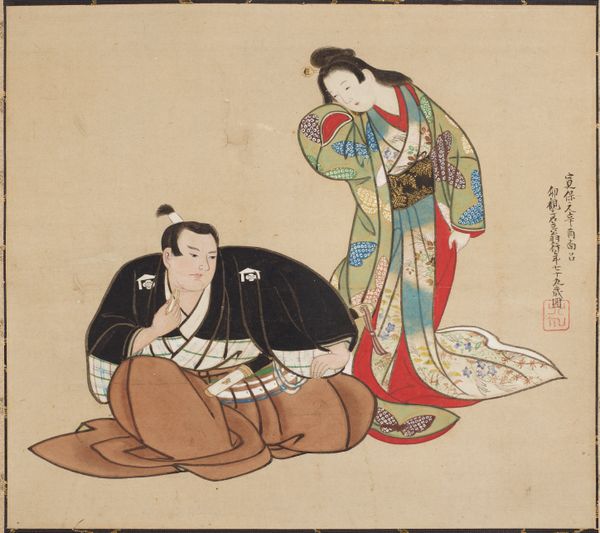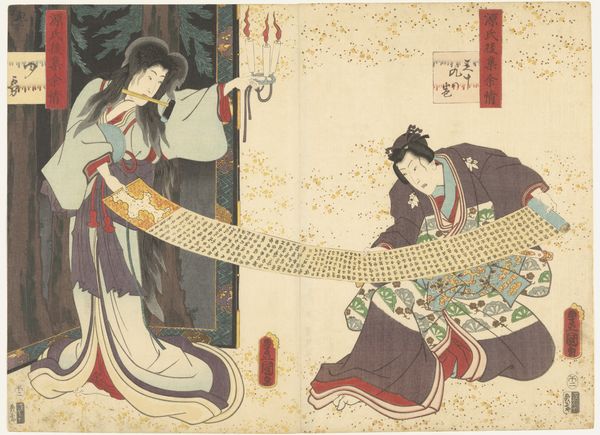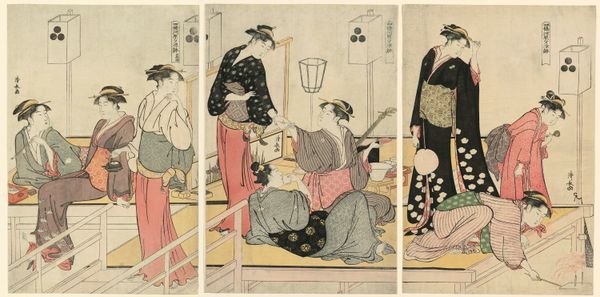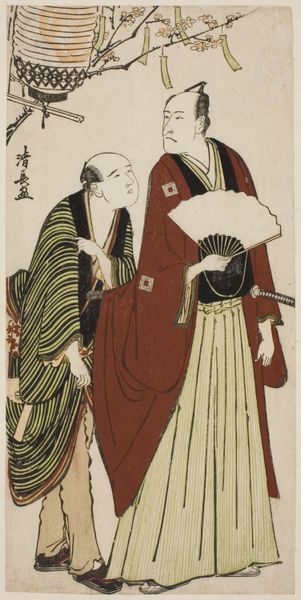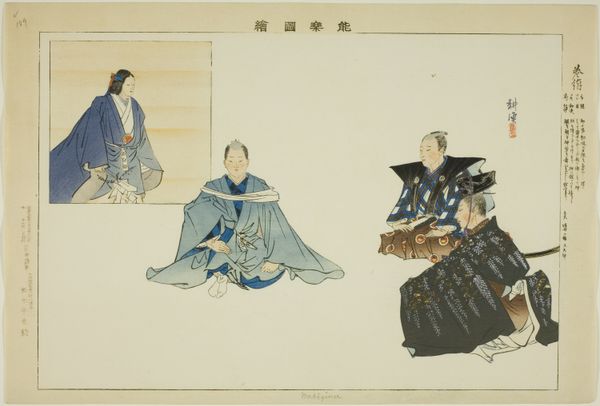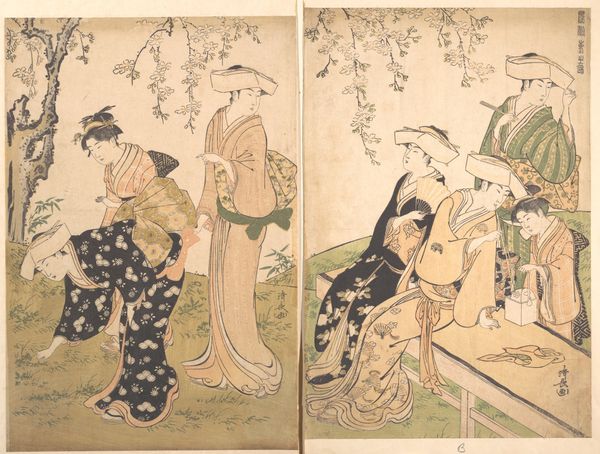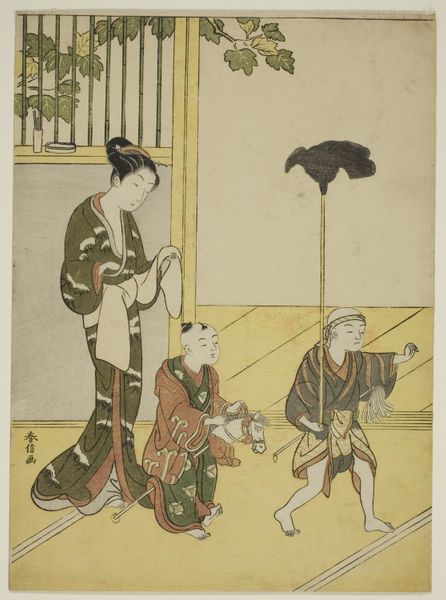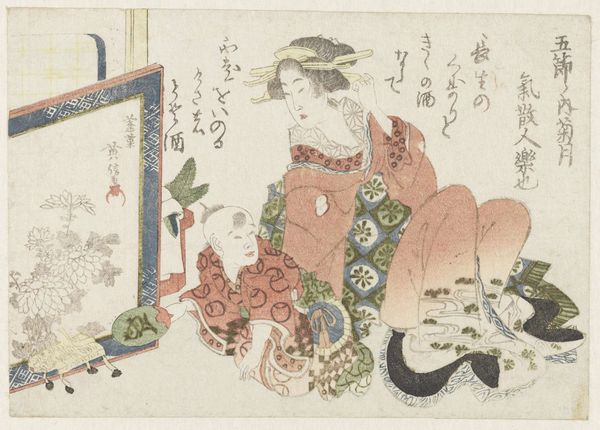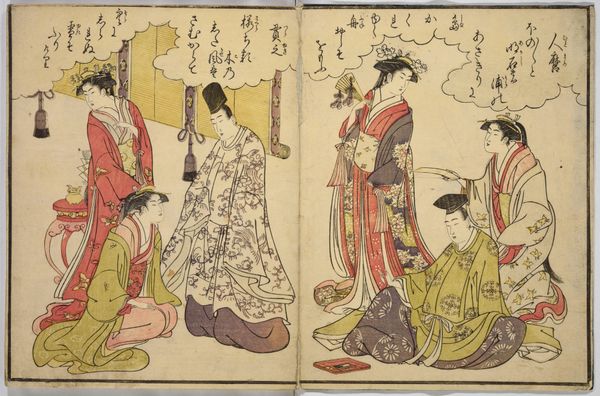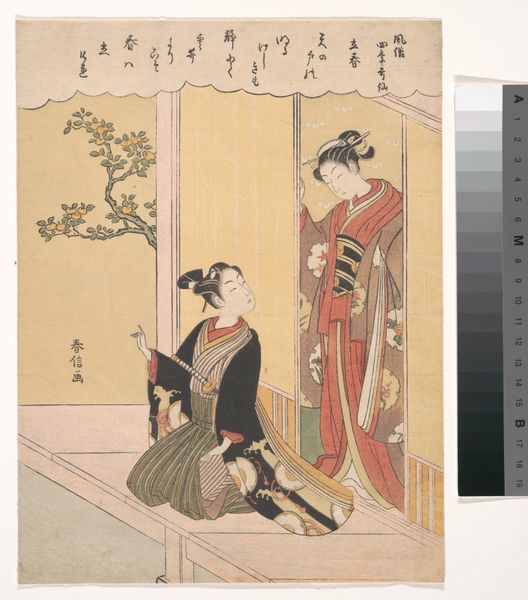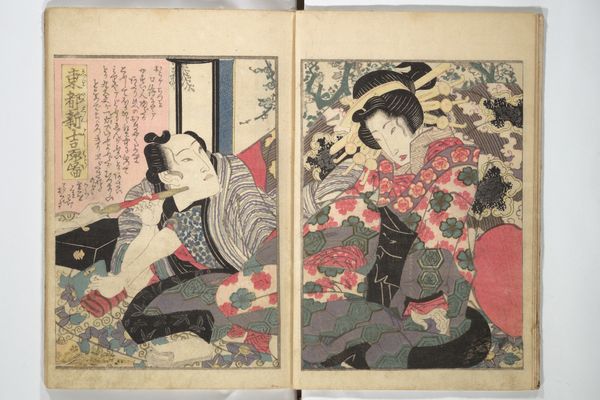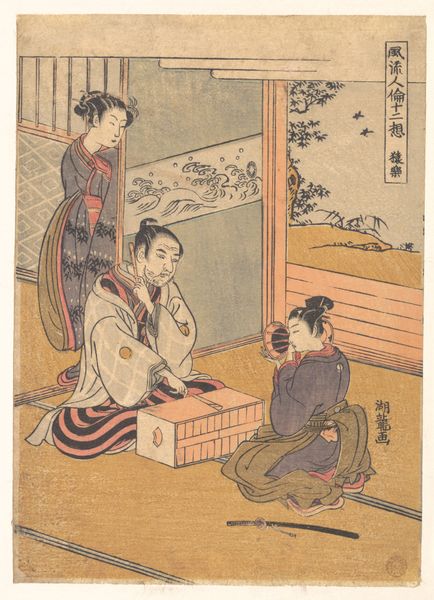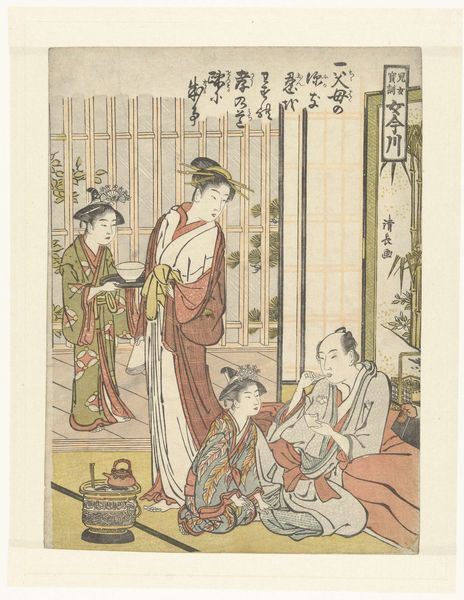
Actors Onoe Eizaburō III as Ōboshi Yuranosuke (R) and Iwai Kumesaburō II as Ōboshi Rikiya (L) c. early 1830s
0:00
0:00
print, ink, woodblock-print
#
portrait
# print
#
asian-art
#
ukiyo-e
#
figuration
#
ink
#
woodblock-print
#
genre-painting
Dimensions: 13 3/4 × 9 11/16 in. (34.93 × 24.61 cm) (image, sheet, a, vertical ōban)13 3/4 × 9 3/4 in. (34.93 × 24.77 cm) (image, sheet, b, vertical ōban)
Copyright: Public Domain
Editor: This striking diptych, “Actors Onoe Eizaburō III as Ōboshi Yuranosuke (R) and Iwai Kumesaburō II as Ōboshi Rikiya (L)" by Utagawa Kunisada, dates back to the early 1830s. It's a woodblock print, showcasing these two figures against simple backdrops with these interesting green fences... it's intriguing, almost like a stage. What story do you think is being told here? Curator: Ah, a Kabuki drama frozen in time! Isn't it fascinating how Kunisada captures the essence of the stage within these bordered frames? You’re right, it feels incredibly theatrical. Think of Kabuki as the opera of Japan – larger than life emotions and characters, with stylized movements and costumes. Kunisada was a master of Ukiyo-e, “pictures of the floating world”, which often depicted these popular actors. Editor: So it's almost like a celebrity portrait of its time? But why depict them like this, with those blank stares? Curator: Exactly! Celebrity culture then was as big as it is today. And their expressions, those aren't blank. Look closely at Yuranosuke, holding the fan. Do you notice a subtle tension? And Rikiya, crouching with such determination. Their static pose highlights the emotional intensity just about to happen... that suspended breath before the action bursts forth. And the simple setting, well, it forces us to focus entirely on the characters, their relationship. Editor: That makes sense. I guess I was too caught up in trying to decipher what was actually happening, instead of what *was about to happen*. I appreciate knowing a bit more about Kabuki to truly understand its role. Curator: Isn’t it rewarding when a bit of context unlocks a whole new level of appreciation? It reminds me that art is rarely about what we *see*, but rather what we *feel* when we are face-to-face with it, with a heart full of curiosity.
